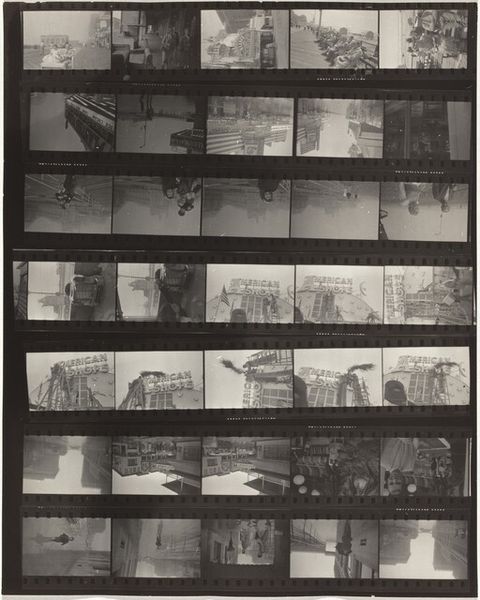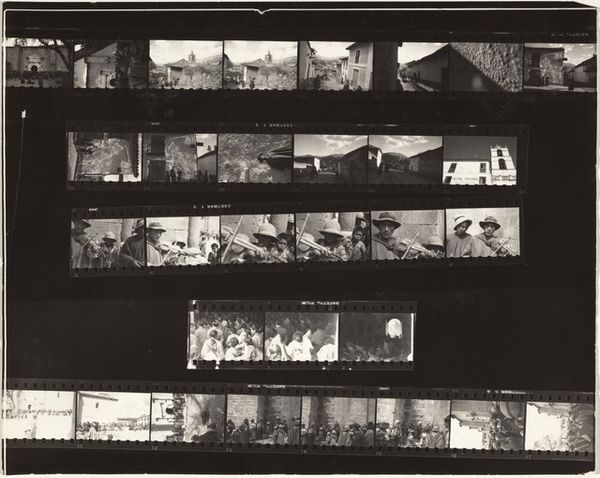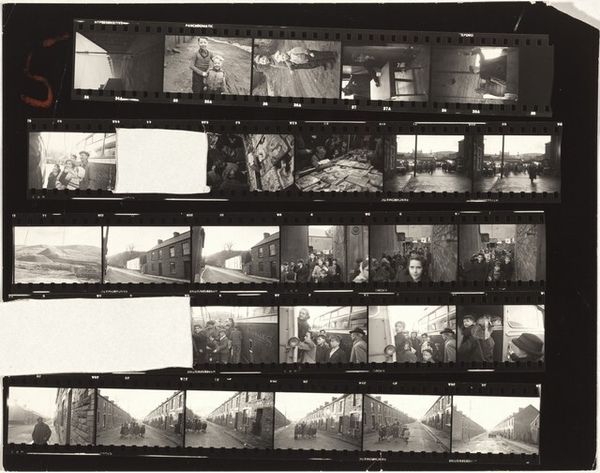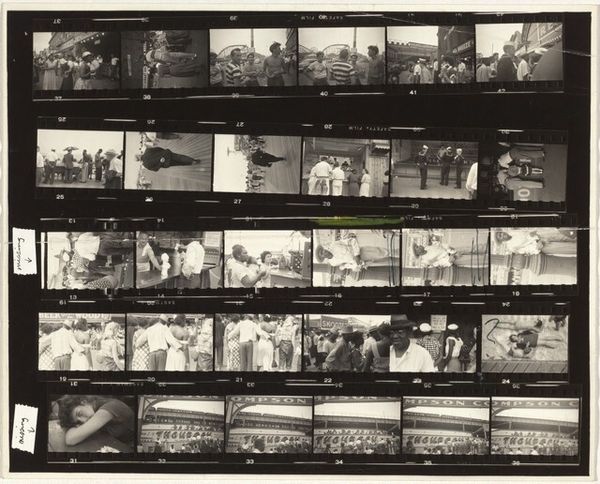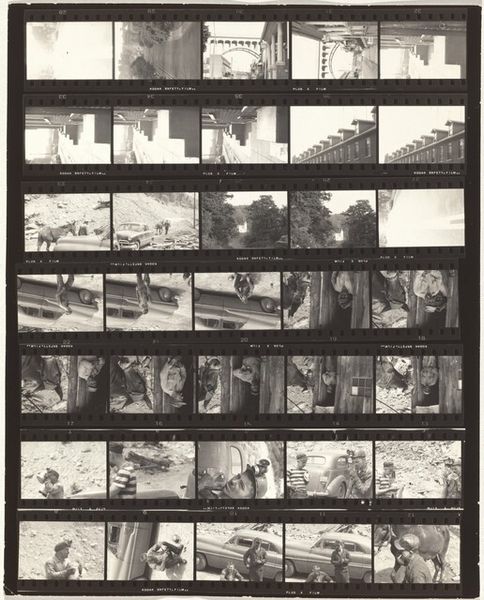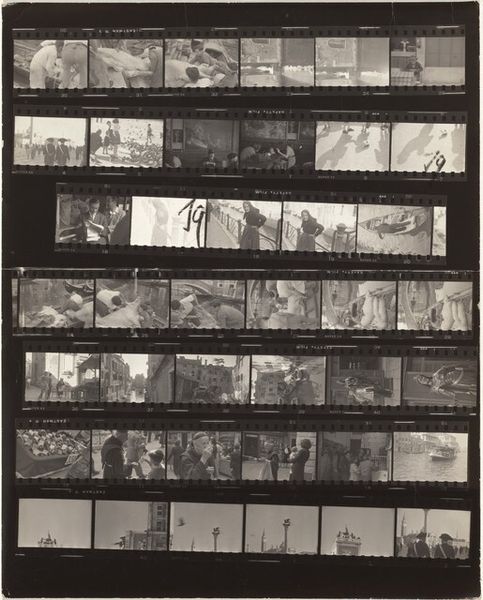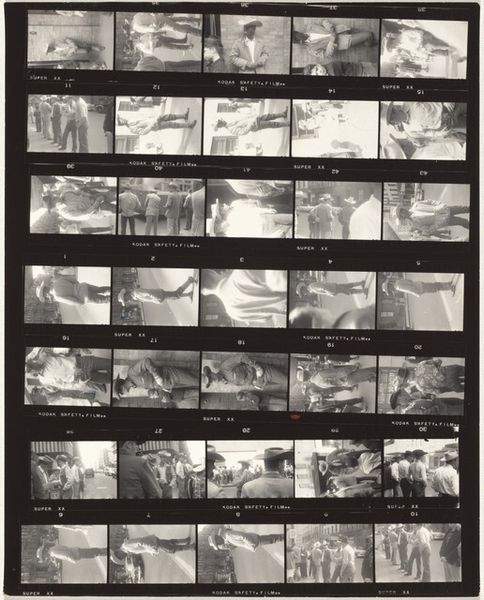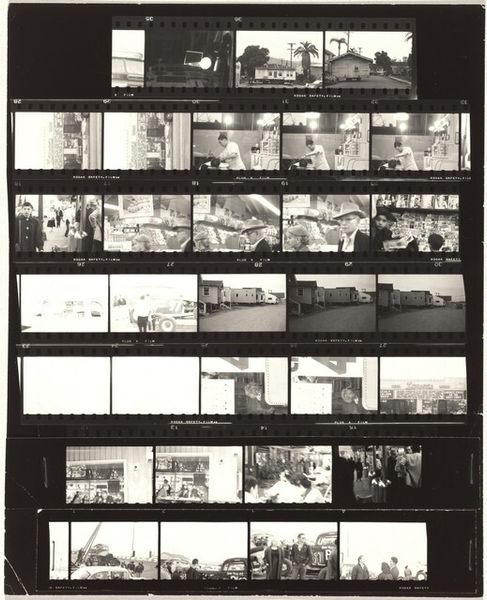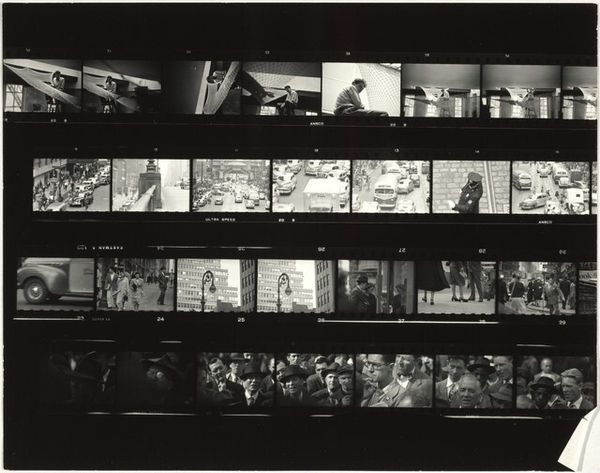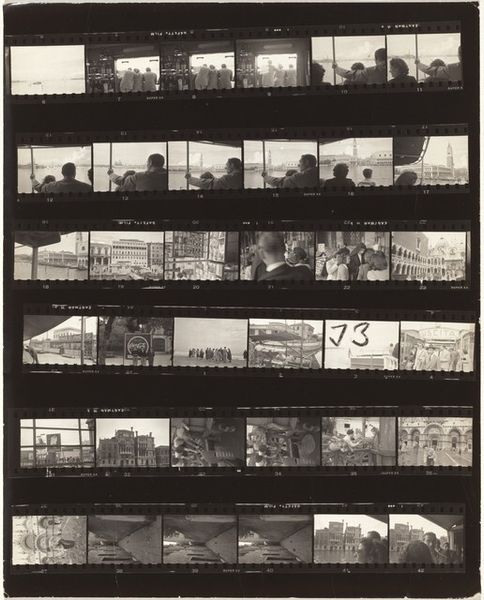
Dimensions: sheet: 21.4 × 27.7 cm (8 7/16 × 10 7/8 in.)
Copyright: National Gallery of Art: CC0 1.0
Curator: Here we have Robert Frank's “Wellfleet and Early New York City,” a gelatin-silver print made between 1949 and 1962. It's essentially a contact sheet presenting various snapshots. Editor: My first impression is fragmented memories—the contrasts between light and shadow really evoke a sense of nostalgia and perhaps a slight feeling of unease. The many tiny, disjointed images scattered on the gelatin force you to jump from scene to scene without giving you the comfort of narrative structure. Curator: Exactly. These images offer fragmented glimpses into mid-century American life. Notice how Frank juxtaposes images of ordinary people, urban landscapes, and personal moments? I see that reflecting broader cultural tensions, particularly in relation to class and urban decay, while grappling with individual vulnerability in postwar America. Editor: Considering his process is so closely tied to photographic equipment of his day, I can't help but think about the labor it would take in the darkroom, all that time in chemical solutions. It emphasizes the way image-making itself becomes a social practice, influencing the final presentation of reality and personal documentation. I also consider how the nature of gelatin as a medium deteriorates, just as lived experience tends to decompose in memory, shifting into sentiment. Curator: The selection and arrangement feel critical too. These are not just random snapshots, are they? I'm particularly interested in thinking of the placement of the crowd next to the picture of children-- I interpret it as commentary on the next generation facing systemic problems. These photos demand us to see these places in a new light. The image resists dominant narratives around progress and prosperity, challenging our expectations of art in its own quiet way. Editor: I’m drawn to the idea of how mass production techniques were used. The image looks reproducible, cheap, even. How does the ubiquity of cameras contribute to art in unexpected ways? As for labor, did Frank intend for mass reproduction? Were they striving for this style, and if so, what does that choice tell us? Curator: Perhaps his social realist project also speaks of Frank's own position as an immigrant in America, offering a distinct vision that reveals the cracks beneath the shiny surface of postwar prosperity, and allowing us to consider identity in relation to larger social issues. Editor: Seeing how the photos emphasize Frank's engagement with the materials used is extremely helpful in analyzing and deconstructing the meaning. Thinking about the process enriches the image. Curator: Precisely! It allows us to bring forth how history and contemporary theory might overlap, allowing for richer discourse to follow. Editor: It also gives rise to conversations we would normally not be capable of having by simply observing the visual alone.
Comments
No comments
Be the first to comment and join the conversation on the ultimate creative platform.
